Rituals & Romance: Your Comprehensive Guide to the Modern Indian Wedding
Whether you’re planning one, attending one, marrying into one or just lost in a “sangeet” hashtag rabbit hole—welcome. This guide is your no-BS breakdown of what “Indian wedding” really means (hint: it’s not one-size-fits-all and it definitely lasts longer than your average relationship situationship). Because let’s be real—what qualifies as “Indian” spans dozens of cultures, religions and regions. A Sikh Anand Karaj in a California vineyard isn’t the same as a Tamil Brahmin wedding in a New Jersey banquet hall. And that’s the point: this isn’t just one wedding. It’s a whole multiverse. Let’s dive in.
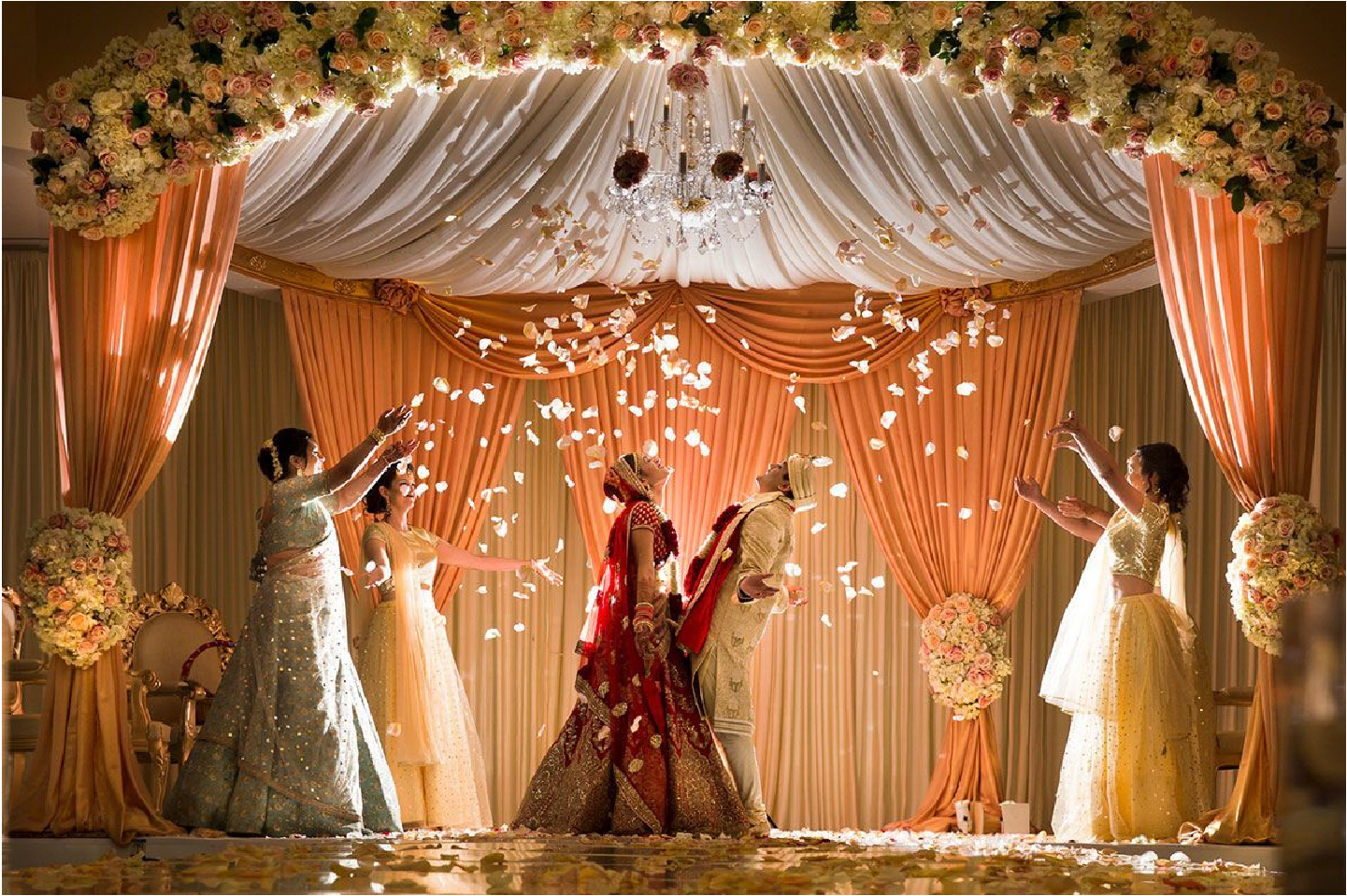
last updated: May 13th, 2025 | 12-minute read
If you’ve ever Googled “Indian wedding,” chances are you landed on a 27-scroll blog explaining things like dowries, fourteen steps of a Hindu pheras, and how brides are supposed to cry when leaving their parents’ house. Cute in theory, but unless you're planning a Shaadi-themed museum exhibit, it’s probably not what you came here for.
Traditionally, Indian weddings were massive, ritual-packed, multi-day affairs—emphasis on the ritual part. We're talking roka, haldi, mehendi, sangeet, baraat, milni, pheras or Nikkah, reception, and even post-wedding rituals like the vidaai and grihapravesh. In-laws exchanged coconuts, aunties compared gold sets, and someone always sobbed near a dhol.
These customs were rooted in deep symbolism—family, fertility, faith, you name it—and came with major expectations: brides had to be demure, grooms had to be providers, and love? Optional, but not required. Arranged marriages were the norm, and while that’s still true for a lot of desi families (even in the U.S.), the “arrangement” now usually comes with consent, mutual respect, and a dating phase that sometimes includes watching Netflix with subtitles.
That’s where this blog steps in. Because Indian weddings today? They’re doing the most—in the best way. Think: queer baraats, mehendi pool parties, vegan receptions, interfaith mashups, lehenga-clad brides doing Beyoncé choreography.
And I’ve seen it all. As someone who’s helped coordinate weddings coast-to-coast (and heard every chaotic vendor story under the sun), I’m here to give you the real scoop—according to couples, aunties, decorators, mehendi artists and DJs alike. So if you’re tired of 2010 Pinterest boards and are ready to decode the modern desi wedding multiverse (with your sanity intact), keep reading. We’re just getting started.

Chapter One: Before the Baraat — Pre-Wedding Ceremonies
Before anyone walks around a fire or gets pelted with rose petals, there’s a whole pre-game. And in the desi wedding universe? The pre-game could be its own Netflix mini-series. Let’s start at the top:
The Roka Reveal — Making It Official, Desi Style
This is the OG "we're making it official" moment—basically a formal meet-the-parents + blessings + lowkey flex of mithai trays and new jewelry. For some couples, this replaces a proposal. For others, it’s just a cute milestone with ladoos and awkward smiles.
Tilak (or Shagun) — The Starter Pack Ceremony
This is where the groom’s fam is gifted... stuff. Think: clothes, sweets, maybe some cash. It’s the “thanks for taking our kid off our hands” starter pack.
Mehendi Madness — Henna, Hype, and Hidden Words
Now we get to the fun. This is the henna party where the bride gets her palms and feet decked out in intricate henna designs that hide the groom’s name (a high-stakes game of Where’s Waldo for later). Traditionally women-only, but today? It’s co-ed, themed, full of mocktails and masala, and sometime s even has a bounce house.
Haldi Glow-Up — Turmeric, Blessings & a Bit of Chaos
Yes—this is where everyone starts posting those yellow-stained, turmeric-glow selfies. But the tradition is more than just Instagrammable skincare. Haldi is a pre-wedding blessing-slash-protection ritual. The bride and groom are slathered with a paste of turmeric, sandalwood and rosewater by their nearest and dearest. Some families go gentle, others treat it like Holi with better lighting.
Sangeet Showdown — Dancing, Drama & DJ Sets
The final boss of pre-wedding events. Think: full-blown concert meets family talent show. It used to be a women-only night of singing folk songs, but now it’s a co-ed dance battle with LED screens and custom Spotify playlists. There will be skits, there will be choreography, and there will be at least one cousin who thinks they’re Ranveer Singh.
Depending on your family’s regional background, you might also see things like the Jago (a loud Punjabi ritual involving lit pots and midnight dancing), the Mayun (in Muslim weddings, where the bride is basically put on bridal house arrest for a few days of pampering), or even the Umbracho Pani (a Sindhi ritual that involves fetching water from a temple before sunrise).
Not every couple does every pre-wedding ceremony. Some mix and match, and some say “nah” to tradition and throw one big fusion brunch. The key thing? These events aren’t just pre-wedding fluff—they’re emotional checkpoints, family bonding moments, and a chance for everyone to bring out their best lehenga before the main event. And trust me—sometimes the best stories happen before the vows are even said. Stay tuned.

Chapter Two: The Main Event — Wedding Day Processions
Alright besties, it’s finally time for the main event. You’ve survived the sangeet drama, scraped turmeric out of your pores after the haldi, and pretended to understand that one auntie’s theory on why mehendi color determines love. Now comes the Big Day™️ — but plot twist: in Indian weddings, the “day” isn’t just a single, neatly packaged ceremony. It’s a whole vibe, a sacred script, a series of processions that have been passed down through generations. But today, it still leaves plenty of room for choreographed entries and firework exits.
Let’s break it down—from baraat beats to pheras, plus a peek into how our non-Hindu friends tie the knot. Spoiler: there’s no kissing at the altar, but there’s definitely hand-holding.
The Baraat: When the Groom Arrives Like a Bollywood Action Hero
The wedding day usually kicks off with the baraat—and it is not a subtle moment. Think: horses, dhols, color bombs, Bluetooth speakers playing “Mundian To Bach Ke” at full volume. Traditionally, the groom shows up on a horse (or elephant, or convertible, or jet ski if you’re extra), accompanied by his squad dancing in celebration. This isn't just a party for the vibes—it's a ritual signifying the groom’s journey to claim his bride, and yes, the bride’s fam usually greets him at the entrance in a warm (and occasionally competitive) welcome known as the milni.
Mandap Moments: The Sacred Stage
Now we enter the heart of a traditional Hindu ceremony: under the mandap (a beautifully decorated canopy), rituals unfold in front of the sacred fire. The ceremony begins with a Ganesh Puja to bless the occasion and clear away obstacles (because even weddings need Ganesha's divine customer service). Then comes the kanya aagaman, the bride’s entrance—cue dramatic music, misty-eyed parents, and the groom trying not to cry on camera.
Next up is the kanyadaan, where the bride’s parents symbolically give her away. This is one of the most emotional moments of the ceremony, but let’s be real—modern desi brides are no one’s property. Many couples are reframing this ritual as a mutual commitment, with both sets of parents “giving” and “welcoming.” It’s 2025—we’re not handing off daughters like signed leases.
Union, Without the Tongue: Jaimala, Hasta Melap & Mangal Sutra
The couple exchanges flower garlands (jaimala) as a gesture of mutual acceptance. It’s sweet and symbolic. Then comes the hasta melap—literally the joining of hands, tied together with a scarf or stole, representing unity and commitment. Think of it as the original Handfasting ceremony before Pinterest weddings made it trendy.
In many ceremonies, the groom ties a sacred necklace known as the mangalsutra around the bride’s neck—another moment of spiritual commitment. Some couples also exchange rings here (yes, like in Western weddings), especially in more modern or interfaith ceremonies. But no, there’s no kiss—this isn’t a Hollywood rom-com. The symbolism is in the vows, not the PDA.
Walk It Out: Mangal Pheras & Saptapadi
With hands still joined, the couple walks around the sacred fire—four times in most North Indian ceremonies (mangal pheras), representing dharma (duty), artha (prosperity), kama (love), and moksha (liberation). In South Indian weddings, they might walk seven steps together—saptapadi—each step symbolizing a specific vow. This is usually when the couple is considered officially married.
The fire? It’s not just for the 'gram. It represents divine witness. The idea is that Agni (fire deity) is watching over the union, making sure you both behave and keep your promises. No pressure or anything.
Sindoor, Sips, and Sneaky Shoes
Next, the groom applies sindoor (vermilion powder) to the bride’s hair parting—a visible symbol of her married status. It’s intimate, powerful, and one of those “yep, this is happening” moments. Then there’s the joota chupai—a playful side quest where the bride’s squad hides the groom’s shoes and demands money for their safe return. It’s extortion, but make it cute.
Okay, But What About Non-Hindu Weddings?
We’ve been deep in mandap territory, but remember—“Indian wedding” ≠ “Hindu wedding.” Let’s take a quick spin through other traditions, because South Asia is nothing if not diverse:
Sikh Weddings: The Anand Karaj
Held in a gurdwara, the Sikh wedding ceremony centers around the Anand Karaj. The couple walks around the Guru Granth Sahib four times, each round accompanied by a verse of the Lavan hymn. The focus is on spiritual union and equality. The ceremony ends with the Ardas (prayer), followed by snacks. Lots of snacks.
Muslim Weddings: The Nikkah
Indian Muslim weddings revolve around the Nikkah—a legally binding contract of marriage, signed in front of witnesses. There’s a mahr (gift or dowry from groom to bride), a Quran recitation, and a short sermon by the imam. Then: signatures, sweet dates, and celebration.
Christian Weddings: Desi + Divine
Indian Christian weddings blend Western traditions with regional flair. You’ll often see a white gown, a church ceremony, and a ring exchange officiated by a pastor. But don’t be surprised if there’s also a haldi-style ritual before the big day, or a reception with dhol beats and masala shrimp. South Indian Christians in particular keep many cultural customs alive—because Jesus and jhumkas can coexist just fine.

Chapter Three: After the Aisle — Post-Wedding Rituals & Celebrations
So, the pheras have been walked, the joota's been ransomed, the sindoor’s in place, and the mandap photos are flooding the group chat. But before you think it’s time to kick off your heels and retire your lehenga, think again. The wedding may be “official,” but the celebrations? Oh, they’re just getting warmed up. Welcome to the after-party era of the Indian wedding—the post-wedding rituals and events that are equal parts emotional, symbolic and, yes, still totally Instagrammable.
Vidaai: Cue the Tears (and the Tissue-Wielding Aunties)
This one’s a core memory in every desi bride’s timeline. The vidaai is the bride’s official sendoff from her family home. It’s deeply symbolic—equal parts joyful and gut-wrenching—as she leaves her parental home to begin a new chapter. Expect lots of crying and rice tossing (symbolizing prosperity and gratitude).
Grihapravesh: Welcome to Your New Life (and In-Laws)
Once the couple arrives at the groom’s family home (or wherever they’re starting married life), the bride is welcomed with a ritual called grihapravesh. Think of it as a spiritual housewarming with coconut cracking, aarti plates, and the bride knocking over a pot of rice at the entrance—symbolizing abundance entering the home. Depending on your region or family vibe, this might be called kanya aagaman, and yes, it’s usually followed by aunties poking you about when you’ll start having kids. Just smile, wave, and change the subject to the dessert spread.
Bou Bhat, Pag Phera & Other Regional Flavors
If you thought the customs stopped there, buckle up. In Bengali weddings, there’s the bou bhat, where the bride serves rice and ghee to her new fam as a symbolic welcome gesture. In many North Indian and Gujarati traditions, there’s pag phera, where the bride returns to her parents’ home (usually after a day or two), often with the groom in tow. This mini-homecoming is less about ritual and more about eating your mom’s cooking again before real adulting begins.
The Reception: Glitz, Glam and DJ-Sponsored Cardio
Let’s be honest—if the wedding was the ceremony, the reception is the main event for anyone who came for the open bar and the dance floor. Usually happening the night of or the day after the wedding, the reception is your excuse to swap out the heavy wedding outfit for something glitzy but breathable, eat at least three kinds of biryani, and vibe to a mix of Bollywood bangers, bhangra beats and whatever EDM remix your cousin bribed the DJ to play.
Expect speeches, cake cutting (yes, that’s a thing now), a first dance (also a thing), and a whole lot of aunties asking why you’re not dancing while dragging you onto the floor. Pro tip: Don’t fight it. The reception dance floor is where legends are born, dupattas go missing, and you realize your uncle knows all the moves to “Kala Chashma.”
That Dramatic Exit: Horse Carriages & Fireworks
Depending on how extra your crew is, the bride and groom sendoff can range from a quiet Uber Black moment to a full royal carriage parade. Some couples opt for a sparkler tunnel exit, while others leave in a vintage car, horse-drawn carriage or even a getaway scooter. In Punjabi weddings, the groom might get “kidnapped” by the bride’s side in one last prank that ends in more cash and more laughter.
Bottom line? Indian weddings don’t end at “I do” (or its equivalent). The post-wedding rituals are an emotional cooldown and a high-energy after-party rolled into one—blending centuries-old traditions with modern-day flair. And honestly, by the time it’s all over, the couple has usually lived through enough plot twists to pitch a six-season Netflix drama. With sequels.

Chapter Four: Love, Faith & Fusion—Religious and Cultural Diversity in Indian Weddings
Let’s get one thing straight: saying “Indian wedding” is like saying “American food”—technically correct, but wildly vague. India is home to over a billion people, dozens of religions, hundreds of cultures, and more wedding traditions than there are bridal lehenga colors (and that’s saying something). So, if you were expecting one universal script with interchangeable outfits—sorry, babes, this isn’t Ikea furniture. Let’s unpack.
We've already covered Hindu, Sikh, and Muslim weddings, but there are still more to explore. With Jain weddings, expect vows of non-violence, minimalism, and a solid dose of spiritual elevation. And then there are Buddhist weddings, which tend to focus on blessings, meditation, and simplicity over pomp.
And while religion plays a central role in shaping ceremony structures, regional culture adds its own masala. A Bengali Hindu wedding and a Gujarati Hindu wedding? Very different food, attire, rituals and energy. Tamil Brahmin weddings often start at sunrise. Kashmiri Muslim weddings span weeks. A Marwari ceremony might include sword dances. Sindhi weddings? They’ll have that umbracho pani and maybe even a little pre-wedding karaoke. The deeper you go, the more chaotic and charming it gets.
Now here’s where it gets even more real: interfaith and intercultural weddings are on the rise—especially among South Asians in the U.S. Gen Z and millennial couples are blending traditions, honoring both families, and curating ceremonies that feel authentic to them. You might see a Hindu-Christian fusion where the bride walks down the aisle in a red lehenga to “Canon in D,” followed by pheras under a mandap. Or a queer Sikh-Muslim couple holding a dual ceremony that includes both the Nikkah and the Anand Karaj. These aren’t rare exceptions anymore—they’re the new norm. And vendors? Slowly but surely, they’re catching up.

Chapter Five: Guest Experience & Etiquette—How Not to Be That Wedding Guest
If you’ve been invited to an Indian wedding—first of all, congrats, you’re about to witness a multi-day celebration that makes Coachella look like a PTA meeting. But before you RSVP yes and start panic-ordering a lehenga from Amazon (please don’t), let’s talk etiquette. Because being a good guest at an Indian wedding isn’t just about showing up—it's about showing up right.
Plus-ones? Indian weddings are known for their guest lists longer than a CVS receipt. But don’t assume your invite means your plus-one is too. If it doesn’t say “and guest,” it’s not a typo—it's intentional. (Yes, even if your situationship has met your mom.)
Timing is tricky. Some weddings span 3+ days; you’re not expected at every event, but don’t ghost the main ceremony either. When in doubt, ask the wedding website or designated contact (read: not the bride’s DMs at midnight).
Food? Always fire. Whether it's a fully veg Gujarati spread or a lavish halal buffet, Indian weddings usually go all out. Dietary restrictions? Most couples plan for them, but don’t assume—check the RSVP form or just ask nicely. And no, you can’t bring your own protein bar unless you're six years old or 86
Languages? Expect a mix of regional languages, English, and possibly Sanskrit or Arabic in the main ceremony. Some weddings provide translations or programs, but even if they don’t, just vibe respectfully. It’s not about knowing every word—it’s about honoring the moment.
Gifts. Cash is classic (think crisp bills in a pretty envelope), but check if there’s a registry. Gold and silver are traditional for close family, but if you’re not sure, play it safe. And remember: don’t show up empty-handed, and definitely don’t ask where to Venmo the couple mid-dance floor.
Dress the part. Don’t wear white or red unless told to, skip black unless it’s a chic lehenga moment, and read our full guide on what to wear as a guest before raiding your closet. Spoiler: no stilettos at outdoor mandaps.
Bottom line? Be curious, be kind, don’t assume—and if all else fails, just copy what the aunties are doing (but, like, subtly). You got this, guestlist queen.

Chapter Six: Modern Trends & Adaptations—Mandaps, Memes & Mehendi Pool Parties
Let’s get one thing straight: Indian weddings aren’t stuck in 1805. They’ve evolved, been Instagrammed, dragged through Pinterest boards, and spit out as dazzling, chaotic, and very 2025 productions. If your image of an Indian wedding is all crying brides and awkward buffet lines, think again—because today’s desi couples are lovingly reinterpreting these sacred rituals.
Some drop the parts that feel outdated, others remix them to reflect interfaith identities, LGBTQ+ love stories, or plain ol’ modern priorities. One couple might write their own vows and still walk the pheras. Another might ditch the mandap and recite Urdu poetry under the stars. There’s no one right way to “do” an Indian wedding anymore—just the way that feels right to you. And that’s kind of the point. This generation isn’t discarding culture—they’re reclaiming it. On their own terms.
So how did we get here? Short answer: the internet. Longer answer: globalization, social media, Netflix weddings, and millennials (hi). Social media has given couples endless inspo—and a reason to make their own shaadi go viral.
But don’t get it twisted. Just because it looks like a destination shoot doesn’t mean the traditions aren’t real. Many couples today are finding their own balance between honoring rituals and ditching the stuff that doesn’t serve them.
Attire & Fashion: From Red Sari to Six Looks and a Dupatta
Yes, the bride might still wear a red lehenga (because hello, it’s stunning and auspicious), but she might also rock a neon pink Sabyasachi moment, a white-and-gold Kerala sari, or a pastel organza number made by her cousin’s indie label. Outfit changes are the norm now—some brides have up to four looks: mehendi, sangeet, ceremony and reception (and we love a commitment to costume drama). Grooms aren’t just in cream sherwanis anymore either—they’re going bold with printed bandhgalas, velvet jackets, or custom tuxedos paired with a matching turban.
Meanwhile, bridal parties are embracing coordinated color palettes, printed kurtas, sequined saris, and statement gold jewelry. Oh, and don’t forget: if you're a guest, read the invitation. If the couple says “semi-formal” or “colorful Indian wear encouraged,” they mean it. No one wants to explain the dress code over chai at 7 a.m.
Decor & Venue: Hotel Ballrooms to Mountain Mandaps
Modern Indian weddings still love a good red-and-gold moment, but now we’re seeing mandaps under fairy lights, beachside pheras in Maui, and pastel-draped sangeets in SoCal warehouses. Many couples book hotel ballrooms simply because, let’s be real—these weddings are huge and Auntie Neelam invited everyone from her yoga class. Decor-wise, think lush florals, canopy-style drapes, candle-lit backdrops, and a whole vibe designed to match their mood board (or at least their wedding hashtag).
Food & Cuisine: Beyond Butter Chicken
Gone are the days when Indian wedding food meant one giant table of naan and sabzi. Now? It’s buffet-style (because the guest list is still 400+), but curated. North meets South menus. Vegan biryanis. Indo-Chinese corners. Jain-friendly stations. And if it’s a Muslim wedding, expect no alcohol—but everything else will slap. Expect live dosa stations, artisanal mithai bars, and late-night chai carts for that 2 a.m. sugar crash. Also: Indian wedding menus don’t automatically mean spicy, so no, Karen, you don’t need to pack Tums.
Music, Dance & Entertainment: Full Bollywood, No Intermission
If you thought the dance floor would be lowkey, think again. From baraats with dholis and smoke bombs to sangeet performances with custom choreography, weddings today are full-blown productions. There’s live singing, skits featuring “How We Met” stories, romantic serenades, and even aerial entrances (yep, really). Some couples even hire professional choreographers to coach the whole bridal squad—and if there isn’t at least one bhangra segment, did the wedding even happen?
So there you have it, doston—your whirlwind tour of the modern Indian wedding multiverse. It’s clear this isn’t just a “wedding.” It’s culture, connection and a borderline cardio workout—all rolled into one vibrant, multiday celebration. Whether you're deep in planning mode or just wedding-curious, I hope this guide gave you some clarity (and maybe a few chuckles) on what to expect when you RSVP “yes” to desi love.
And here’s the real tea: No two Indian weddings are the same—and that’s the magic. Your Punjabi-Telugu-Jain fusion brunch wedding in Brooklyn? Totally valid. Your minimalist Gujarati ceremony at City Hall followed by a backyard mehendi with tacos? Also iconic. This isn’t about fitting into a mold—it’s about creating a moment that reflects you (with or without the dhol). Laali’s only rule? Do it with intention, respect, and at least one good playlist.
Ready to plan your own version of desi dreamland? Head to Laali's vendor's page to find mehendi artists, DJs, decorators and more vendors who actually get what you’re trying to do. No cringe, no confusion—just culturally competent professionals who won’t ask if your sangeet is “the engagement party.”
Still got questions? You’re not alone. Scroll down for our juicy FAQ section where we tackle everything from “Do I bring a gift?” to “Why is everyone suddenly yellow?”
xoxo,
Laali Ladki
FAQ: You Asked, Laali Answered
Short answer? More than one. Long answer? Anywhere from 3 to 7 days, depending on how extra the families are and how many aunties RSVP’d. Expect at least three main functions—pre-wedding (like mehendi, haldi, sangeet), the main ceremony, and a reception. Add in travel, religious rituals, and post-wedding dinners and boom—you’ve got a full shaadi week. Hydrate accordingly.
Here’s a cheat sheet for the usual suspects you’ll see in a modern Indian-American wedding. Some couples remix it, others go full traditional—but these are the heavy hitters:
| Event | What It Is |
|---|---|
| Mehendi | Henna party—colorful, chill, and usually co-ed these days. |
| Haldi | Turmeric ritual for blessings and glowing selfies. |
| Sangeet | Dance night + family talent show. Bring snacks. |
| Wedding Ceremony | Hindu, Sikh, Muslim, Christian, or combo—it’s the “I do” moment. |
| Reception | The glam party. DJs, biryani, speeches, and 47 outfit changes. |
Other events you might see: Tilak, Roka, Jago, Pag Phera, Vidaai, Grihapravesh. Not all are mandatory—some are regional, some are optional, some are just for the drama.
That golden glow? It’s turmeric, honey. The ritual is called haldi, and the paste usually includes turmeric, sandalwood, and rosewater. It's meant to bless the couple, ward off evil, and lowkey give them a bridal glow. Yes, it stains. No, your bridesmaids won't forgive you for not buying matching throwaway outfits.
Let’s just say your wallet should start stretching now. Some estimates suggest an Indian wedding in the U.S. can cost up to 6x the couple’s annual income or about 20% of their lifetime wealth. That includes outfits, venues, food for 400, a week of events, and maybe one elephant. (Kidding. Sort of.) Bottom line? Budget smart, plan early, and don’t go broke trying to impress Auntie Sheila.
Sometimes yes, sometimes not. In Hindu weddings, the ring exchange might happen during the engagement or be skipped altogether in favor of rituals like the mangalsutra (sacred necklace). Sikh, Muslim and Christian weddings usually do have ring exchanges. Many modern couples add it in even if it’s not traditional—it’s your love story, your rules.
Nope. No tongue, no dip kiss, no “You may now kiss the bride.” Indian ceremonies focus more on symbolism—walking around the fire, tying sacred knots, sharing garlands. The romance is spiritual, not PDA. Save the kiss for the photo booth.
We love an enthusiastic guest! For women: lehengas, sarees, or salwar suits work great—just avoid white (mourning), red (bride), and super short dresses. For men: kurtas, sherwanis, or even a Nehru jacket with dress pants. Read the invite for dress code clues, and click here for our full desi guest outfit guide that won’t leave you looking like a Bollywood extra from 2007.
Short answer: yes. Long answer: if you’re attending, bring something. Cash in an envelope is classic (called sagan), or go for silver gifts or dried fruit boxes if you’re feeling traditional. Some couples have registries, but many don’t. Just don’t show up empty-handed or ask where to Venmo mid-dance floor. Be classy.
Easy—Laali.co. That’s literally what we do. We’ve curated decorators, mehendi artists, DJs, caterers, and more who understand fusion weddings, cultural nuance and how to pronounce “baraat” correctly. You bring the vision, we bring the vendors. No more guessing games or awkward DMs to that random auntie from Jersey.
Not quite. All Hindu weddings are Indian, but not all Indian weddings are Hindu. Sikh, Muslim, Christian, Jain, and interfaith weddings are all part of the Indian wedding universe. Different rituals, same love. We broke it all down earlier in the blog—scroll up, or better yet, send it to that coworker who keeps calling every desi wedding “a Hindu thing.”
Great question, especially if you’re staring at online carts like a confused raccoon. A lehenga is a skirt-blouse-dupatta combo (read: easier to wear, dance in, and style). A saree is one long piece of fabric draped around the body over a blouse and underskirt—classic, elegant, and a bit more advanced unless you’ve got YouTube and patience. TL;DR: Lehengas are plug-and-play; sarees are art.
Besides looking fabulous in matching outfits? A lot. Desi bridesmaids help coordinate chaos, keep aunties on schedule, guard the bride’s shoes during the joota chupai, and sometimes perform at the sangeet. Think maid of honor meets event manager meets hype girl. Bonus: you get incredible photos, lifelong memories, and first dibs on leftover mithai.
Featured
Desi Weddings
Find Culturally Capable Vendors
You’re not just having a wedding, you’re having a South Asian wedding. From hosting multiple events to incorporating ancient traditions, there’s a lot that will make your wedding unique. With Laali, you can find vendors who get it and have experience making South Asian weddings spectacular!
Connect With Us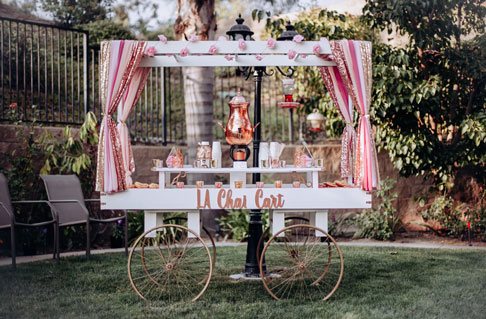

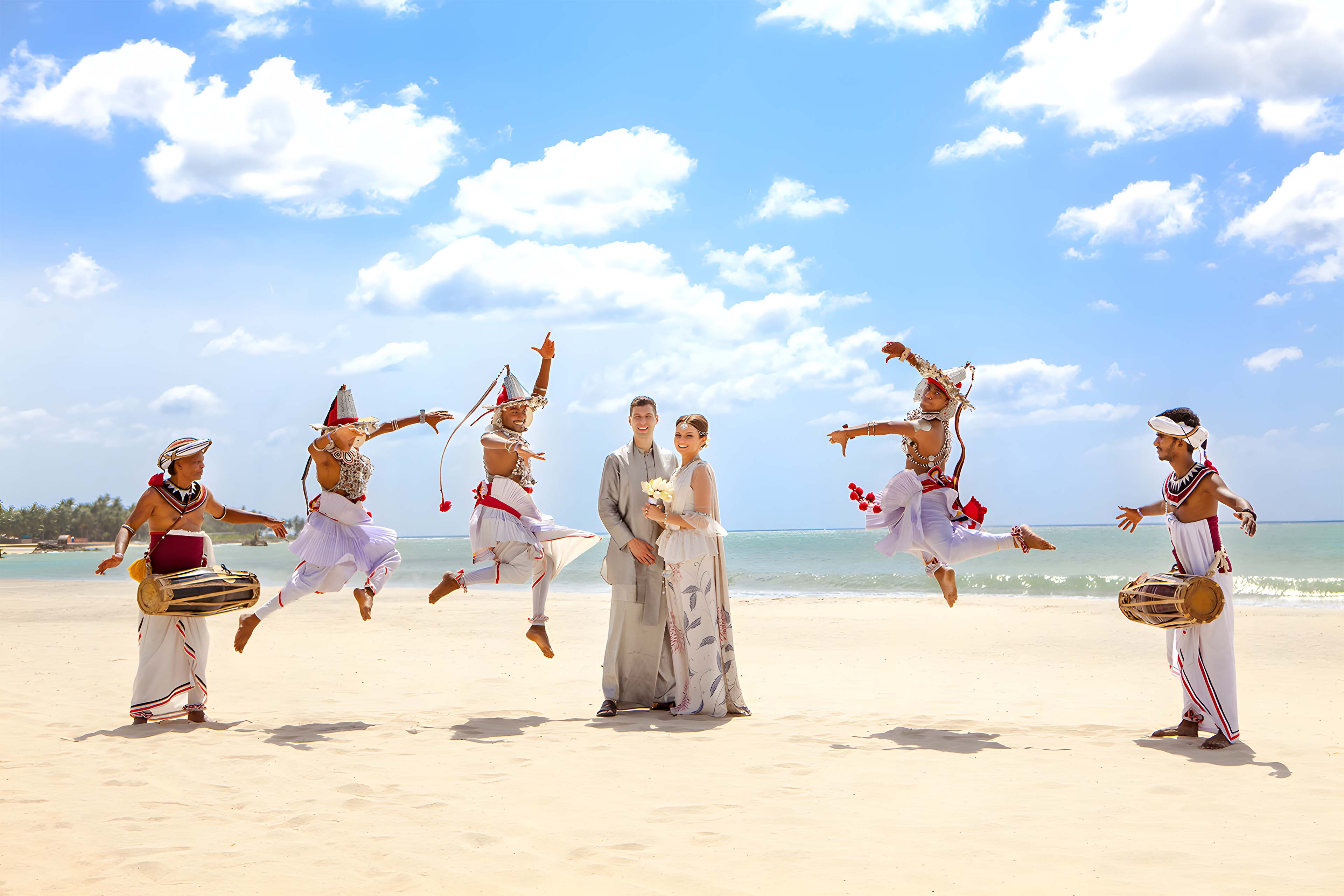
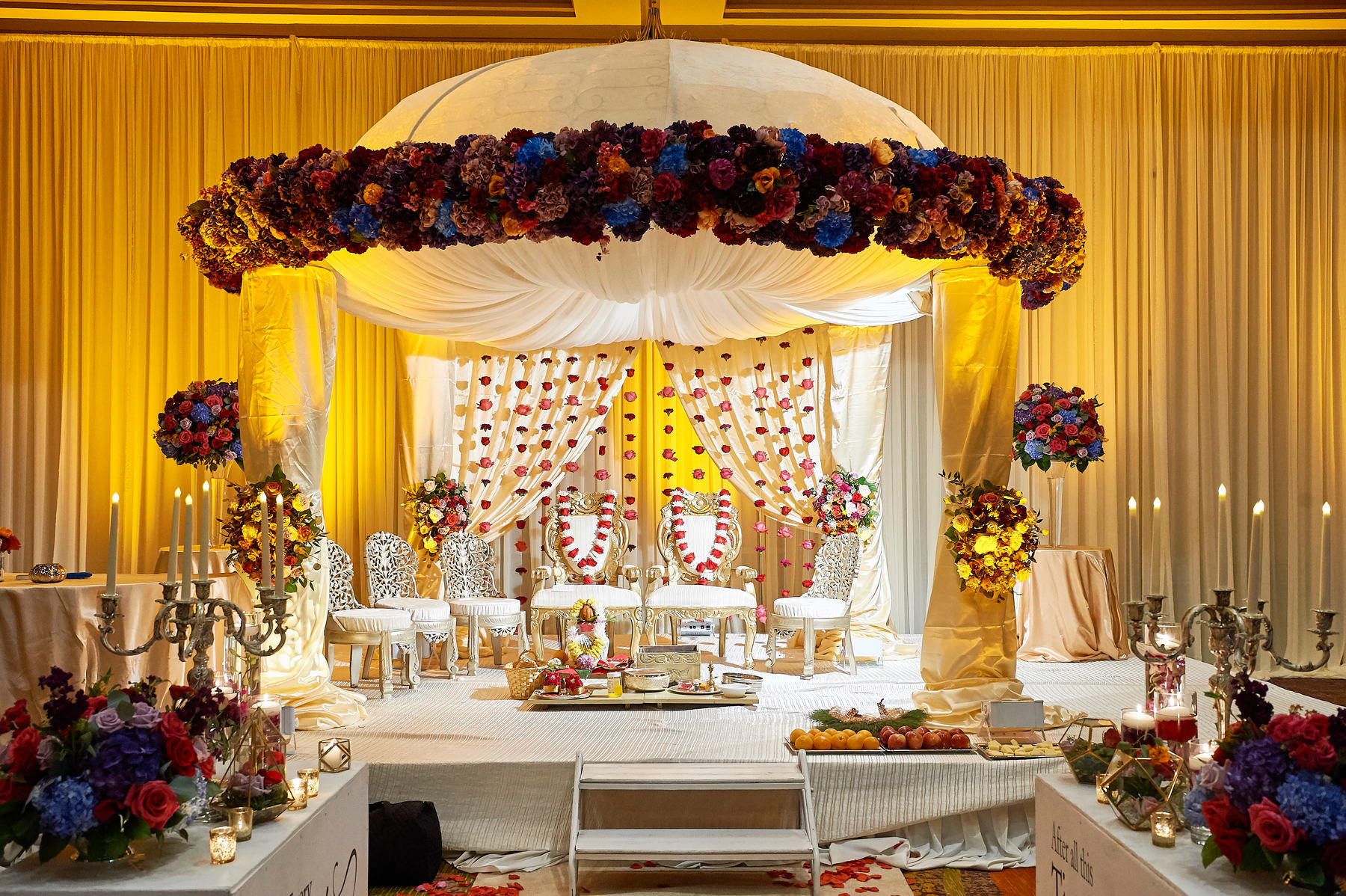
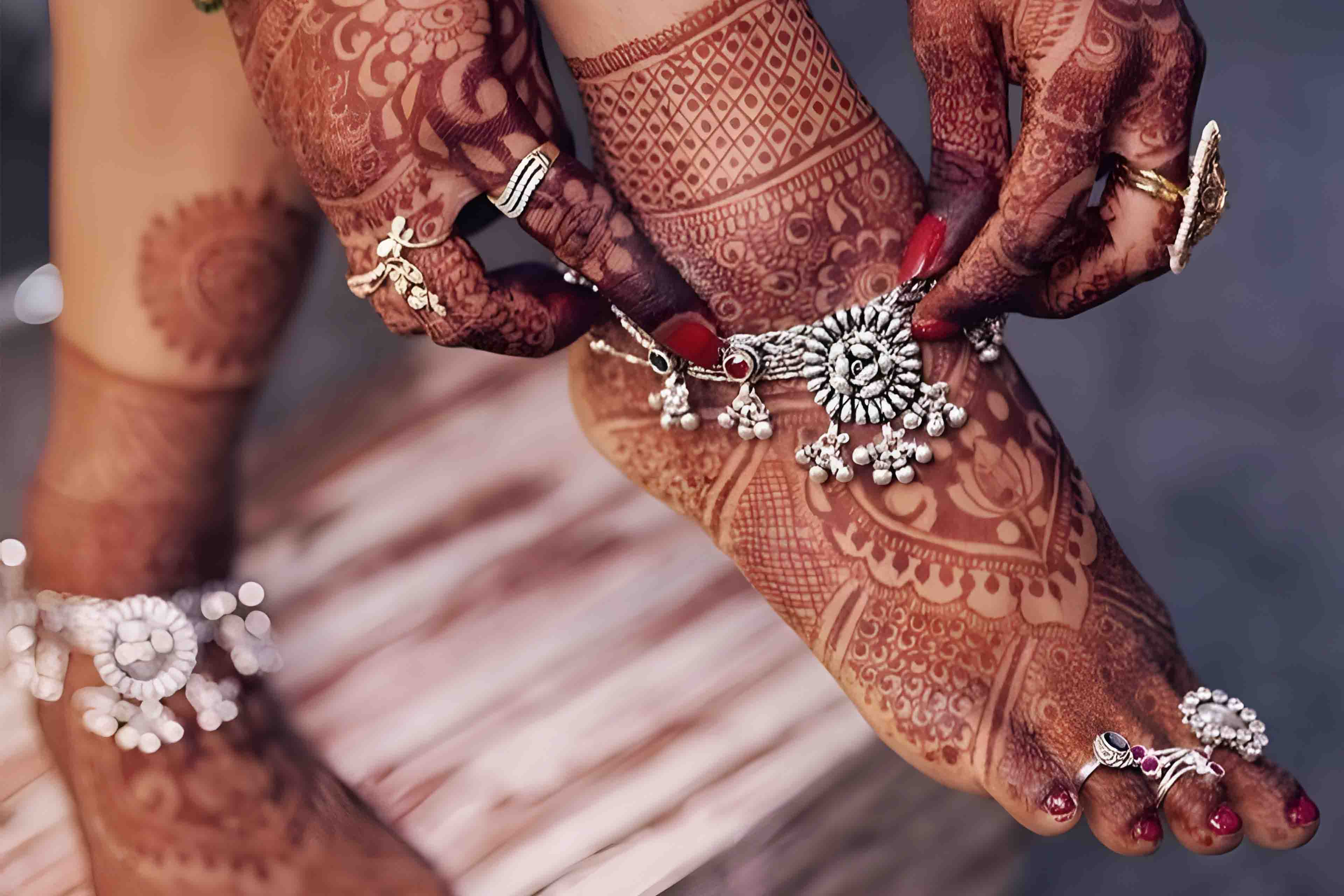
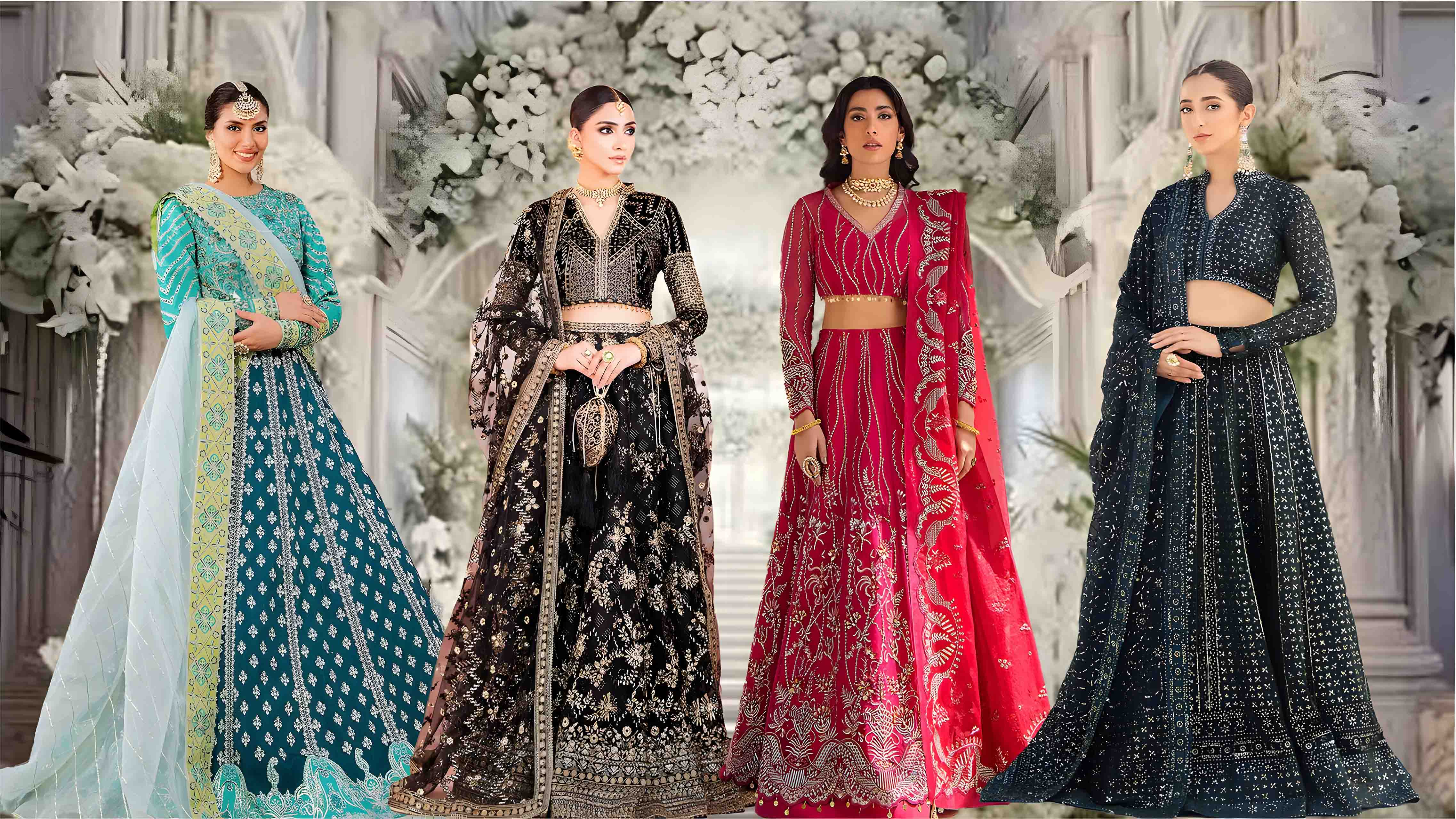
Comments (1)
Anonymous
29 Jun 2025
Laali <a href="http://www.g691afkp88ex15m534hb06wy9ey5x98ns.org/">axelnhcygso</a> xelnhcygso http://www.g691afkp88ex15m534hb06wy9ey5x98ns.org/ [url=http://www.g691afkp88ex15m534hb06wy9ey5x98ns.org/]uxelnhcygso[/url]